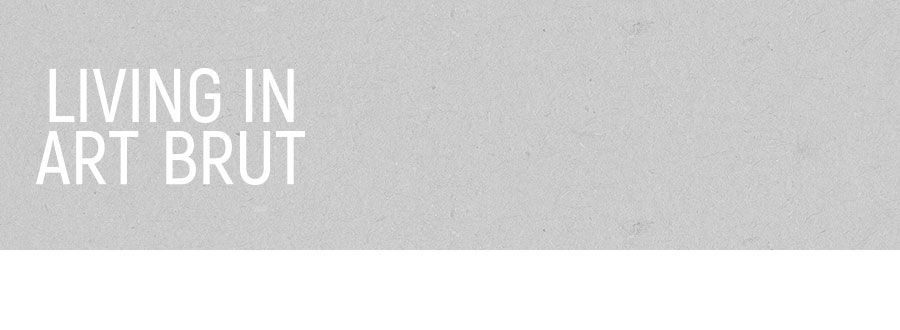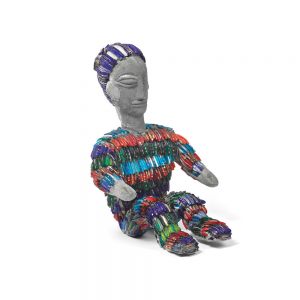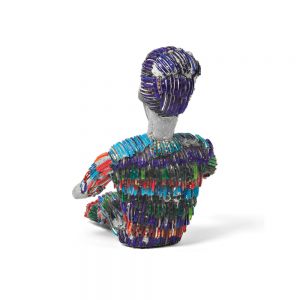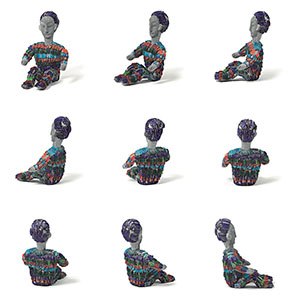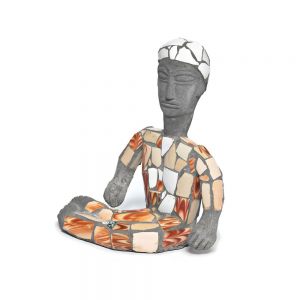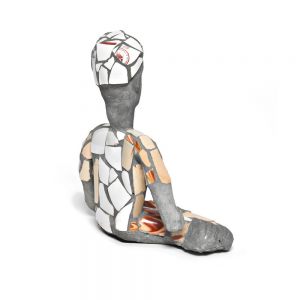Nek Chand
1924 to 2015, Pakistan/India
Nek Chand Saini, which is the artist’s full name, was born into a Hindu family in Berian Kalan, a small village near Lahore, Pakistan.
During the partition of India and creation of Pakistan he fled and settled in Chandigarh, where he lived in exile. Nek Chand married in 1950 and had two children. He worked as a road inspector from 1957 onwards. In the 1950s Le Corbusier and other architects built the city of Chandigarh and it became the capital of the Indian states of Punjab and Haryana. In his spare time Nek Chand created more than 2500 figures, initially in secret. They were made, for example, of ceramic and porcelain shards, bangles, scraps of iron, etc. that he had found at construction sites or among rubbish. He took his bike and travelled from Chandigarh to the Himalayas, where he collected stones. He thus imparted the refuse with a new form and sustainability. His sculptures reflect his dream of an intact world inspired by the Divine with humans and animals. It is possible that he wanted to create a paradisiacal kingdom for gods in the North Indian jungle. In view of his individual sculptures and his sculpture garden, the Rock Garden, Nek Chand’s work stands in strong contrast to the city that was planned and born on the drawing board. At first the garden was illegal; it was only in 1976 and 1988 that the Rock Garden, located on a large tract in Chandigarh, officially opened. In the meantime it is one of the city’s most important tourist attractions. Nek Chand supervised the construction of a second Rock Garden built in Malampuzha Village, Kerala. Although he was a self-taught loner, Nek Chand became one of India’s most important artists. His sculptures can be seen, for example, in The Museum of Everything and in the collection of Audrey B. Heckler in the US.
Selected works


